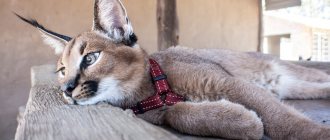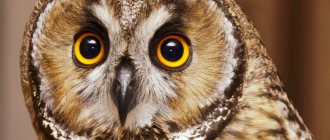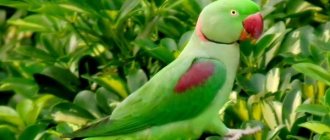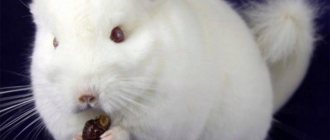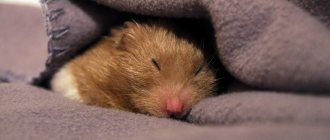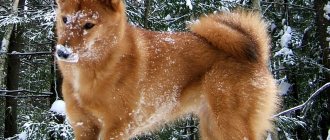- Birds
More and more often, not the usual cats, parrots and hamsters, but exotic animals are being adopted as pets. Owls have become especially popular. There are thousands of videos online of people showing off, holding and petting their apartment predators. But an owl is a wild bird, accustomed to living and hunting in the wild. Is it worth getting this feathered friend for your pet?
What are owls
Do not forget that an owl, even a domestic one, is a bird of prey that has a sharp beak and claws. This cute fluffy, under the cover of darkness, pierces its victim through and through with its claws and tears it apart with its beak.
Owls are very smart and cunning by nature; the flapping of their wings is completely silent, which allows them to get as close as possible to the prey without arousing suspicion. Powerful strong paws are capable of tearing apart prey that does not exceed the size of the bird itself. Therefore, if you have a hamster, a cat or a small dog in your house, it is not recommended to have a bird of prey, as pets can easily become its prey.
It is impossible to remain unnoticed in a room; an owl can turn its head 270 degrees around itself and tilt it to the side 180 degrees. This anatomical feature allowed her to always see everything around her.
What kind of cage do they need?
Owls and other birds of prey should be kept in enclosures - large, spacious, completely enclosed. The walls should be made of wood and fairly dense. Such that a little light and enough air come in, but so that there are no large gaps through which the birds can fly to freedom. Birds of prey actually enjoy being in confined spaces. Such conditions give them a sense of security.
Important! The wingspan of Eurasian eagle owls can reach 1.8 meters. This gives some understanding of the required sizes of aviaries or cages for keeping birds. In addition, they can be quite large themselves - weighing 4-8 kg and in the wild feed on foxes, roe deer and other small prey.
Keeping an owl in the house
Now a little more about the reasons why I strongly oppose keeping an owl as a pet and what you will encounter if you take an owl home as a pet:
- Owls are very vulnerable and susceptible to change. They are not as independent and menacingly lonely as they look. If you go on vacation, the owl will not only not accept food from another person, but will also be very aggressive towards strangers. Moreover, everyone will be “strangers” for the owl, except the one who feeds it and cares for it all the time. And if the owl chooses you as someone, then your long absence can not only cause severe moral trauma to the owl, but also literally kill it.
- Caring for an owl using the trial and error method is a very bad option. Even with familiar pets - dogs and cats, which we have known about since childhood, problems arise. And in the case of an owl, you will have to learn everything you need to properly care for it, because only you will be responsible for this bird. Absolutely everything, from feeding, food choice, diseases, possible infections and to normal daily care, you will have to know and do only yourself. The owl will not let anyone near him anymore.
- You can’t just put an owl on a perch and go about its business. This bird is used to living in pairs, and in this case, its “mate” is you. The owl will not let you forget about it and will scream very loudly, demanding your attention. You will have to devote a lot of time to her, including to give her the opportunity to fly. The bird is in dire need of flight exercises, so it will demand it from you (literally).
- A lot of dirty work awaits you. Owls molt every year, so be prepared to scoop up feathers and owl pellets from a variety of places. Owl pellets (pellets) are a mixture of fluff, feathers and everything that the bird’s stomach has not digested. Oh, and one more thing, you will have to be careful and watch your step, because if you keep an owl at home, you never know what you will step into, I mean poop or droppings. By the way, the owl is not a vegetarian, so its droppings smell accordingly.
- You will need a large, separate freezer where you can store your owl's food. Do not think that the bird will be able to feed on store-bought or even market meat from pigs, cattle or hatchery chickens for a long time. She needs game. You will have to get the game from somewhere and pay for it. Can you imagine having a freezer filled with dead animals in your apartment? But that’s not all the “delights”. When an owl eats, it does not carefully hold a piece of pineapple in its paw (as a parrot does). Having pressed its prey to a branch, perch or any other surface, the owl mercilessly tears it apart. Entrails, intestines, stomach, kidneys, etc. are flying all over the place. Therefore, in order to protect yourself from the terrible stench emanating from the entrails scattered around the room, you will have to gut the game yourself before giving it to the owl. Chunks of meat will still fly around and not smell very good somewhere behind the cabinet, but the insides will smell even worse. But even such precautions will not save you from the need to clean rotten and smelly mucus from walls, cabinets, ceilings and floors.
- Let me remind you one last time that owls are wild birds of prey. A bird of prey may suddenly attack during fun and play without any warning or announcement of its intentions. Keeping an owl is 24 hours of constant work and attention, including deep and fine scratches from its talons on your body with pain and screams.
- Even though you make an owl as a pet, it will never become a pet. You will not get the same joy from interacting with an owl that you can get from interacting with a dog or cat. You will never be able to hold her close, cuddle her, or really pet her. She won't let you do this, but even if she does, believe me, she smells just awful.
- The mating season is a real hell for the owner of an owl who does not find his partner. You will have to put up with her mating cries day and night. It is possible that the owl will consider you as its partner (partner) (this is more likely to happen if you take it into the house as a chick). At the same time, she will actively try to enter into an intimate relationship with you, and in this case, you will become her property. The owl will indiscriminately attack anyone who tries to approach you or enters “your” territory.
- Forget about expensive furniture if you have an owl at home. Anything that can be scratched will be scratched by her claws. Pillows torn to shreds, soft toys, crumbled bedspreads, tablecloths and bed linen will be commonplace for you.
Content Features
A domestic owl needs regular veterinary examination, once a year is the minimum. Finding a qualified doctor to take care of your pet is quite difficult. For example, many owners of owls fly to Moscow to visit a specialist. Do not forget that birds have a very fast metabolism, which is why all diseases in owls progress very rapidly.
Every day you need to spend two hours walking with the owl, teaching it to fly by hand. Without movement, these birds' lungs suffer greatly, so if you do not have so much free time to work with the bird, then it is better to abandon the idea of purchasing it.
Also remember that traveling abroad with an owl is an almost impossible task, and leaving it alone is impossible because of the perishable food. Consider who will be available to feed your pet if you are away.
Diet of what to feed your pet owl
Absolutely any species of owls use exclusively animal food for feeding, represented by worms, large insects, snakes, fish and lizards. Some species prefer to eat rodents and small birds. It is important to remember that owls never feed on carrion and are even willing to starve in order to ultimately obtain complete protein food. On average, one domestic owl can eat a couple of mice per day. Once a week, it is advisable to give the bird of prey a fasting day, which will prevent the development of obesity.
It is advisable to purchase a separate freezer for storing food. Among other things, the owner of an owl must be prepared for the fact that in the process of eating food, such a pet mercilessly tears up the food with the help of its claws and beak, so the entrails of the prey are scattered all over the place. Experienced owl experts recommend gutting game and rodents yourself before feeding them to your domestic owl. It is necessary to give the bird meat along with bones, feathers or wool, from which the predator partially absorbs calcium and other microelements vital for the owl. The undigested remains are regurgitated in the form of a lump called a "pellet".
This is interesting! Owls brought from tropical countries happily eat fruits, various vegetation and berries, and some species are able to go without water for several months and quench their thirst only with the blood of their prey.
Disease Prevention
Not many veterinarians have experience treating owls, and these birds get sick quite often. You can count the number of owl specialists on one hand. Therefore, many owners of birds of prey advise always carefully inspecting their pet’s stool. A healthy owl's feces always look like a white puddle with dark, hard flecks.
The pellets are regurgitated in the form of lumps of undigested food particles (feathers, claws, skins, etc.).
If the stool suddenly turns green or has a putrid odor, this should be a cause for concern and further contact with a veterinarian.
Also, a sick owl loses coordination of movements, it becomes apathetic and lethargic. There must be a decrease in appetite or a complete refusal to eat.
Diseases and treatment
Are you wondering how long do domesticated owls live? In the wild, they will live quietly for 30 and 50 years, but at home they rarely reach 20. But get ready for the fact that you will have to spend about 15 years side by side with your feathered neighbor. The owner’s first task is to go to the veterinarian and have the bird examined for a variety of infections and diseases. Just because an owl looks great does not mean it is healthy. As a rule, all birds of prey are affected by intestinal or lung helminths. The strong immunity of a forest bird prevents parasites from causing serious harm to the body, but after an owl gets into a home environment, its natural cycle of nutrition and vital activity is disrupted, and the bird experiences an enormous amount of stress. Therefore, you should try to find a veterinarian who specializes in birds and conduct an examination.
- Cute dog breeds
- The richest animals
- Cat claw attachments
- Dog
- Long-eared cats
- Cat meowing
Vaccinations
Both for poultry (chickens, ducks) and for forest birds there is a special vaccination system that can protect them from a number of diseases. Usually, in parallel with the vaccine, the specialist also prescribes a course of vitamin and mineral nutrition, because life in captivity greatly limits the predator. If you are planning to purchase a pair and engage in breeding, then your veterinarian will tell you how to set up a nest and care for the little owlets.
How to keep in captivity
The pygmy owl differs from its fellows only in size. She is very freedom-loving, so she does not tolerate being kept in captivity. The best option would be to give her a separate room. Although most often they are kept in cages with a volume of one and a half to two cubic meters. In the place where the owl will be, you can make several perches at different heights.
If the cage will not allow the bird to fly, it must be released periodically. This is important for your pet’s health, as it needs to stretch its wings and get its blood flowing. The bottom of the cage should have a tray, the bird should not walk on its droppings so that redness and ulcers do not appear on its legs. They are difficult to treat.
How to make friends with a predator?
The first time after meeting, many birds do not eat anything at all and timidly hide in a corner. Soon the owl should become active and take the food offered by the owner. When the predator understands that you do not want to harm him, you can begin the training process. Wear leather gloves to protect against claws . Be patient and wait until the owl stops hissing or clicking at your manipulations and voice. No imposition will bear fruit in taming.
If the owner wants to walk with his pet, it is worth purchasing fetters (leather cords connecting the bird’s paws and the owner’s glove). Wear the device from the first days so that the animal gets used to it. The domestic owl is not averse to playing with balls, but you should hide objects that are too small from it, as the bird can swallow them.
Appearance
The Scops Owl got its name because of the characteristic sound it makes. It sounds like "spitting."
As you can see in the photo, the pygmy owl has a gray-brown color with light spots and a streaky pattern. Her body reaches a size of 15-20 centimeters. The feathered creature weighs up to 130 grams. The iris of the eyes is yellow, but orange is also found.
It is difficult to distinguish the female from the male. The female Scops Owls are slightly larger. How do birds live in their natural environment?
Getting an owl
If at this stage you are satisfied with everything, and you still decide to have an owl at home, we move on to the next one - buying a bird and its first days in your house. First, decide what type of owl you would like to keep. It is better if it is a small or medium-sized bird, such as an owl, tawny owl, barn owl, short-eared or long-eared owl. No large predators like eagle owls! The bird must fly, it needs a lot of space. An eagle owl, like other particularly large representatives of the owl family, will feel as if in a cage even in a fairly large room. It is best to take a young bird, which will be easier to tame.
It is advisable to purchase an owl from specialized nurseries, with the appropriate documents for it. This will ensure you buy a healthier, less wild bird. Although almost every individual is infected with internal parasites, so be prepared to spend money on medications and vaccinations against other diseases. It must be said that professional breeding of owls in nurseries is quite rare. A predator caught in the wild does not adapt well to an apartment. So, do not think about the question: how to catch an owl yourself; it is better to purchase it from a nursery with a good reputation.
An owl's cage is not even suitable as a carrier. Place the bird in a large box and take it home. Don't forget to close this temporary carrier and make a few small holes in it to allow air to enter. At home, let the owl get used to its new home, do not frighten it with loud sounds and sudden movements.
Rules of care
In addition to feces, the owner must constantly rake out the owl's feathers. The owl often molts, and profusely. This does not depend on the breed of bird or other parameters. Every day you need to clean the enclosure, change the water in the sippy cup and basin. The water should be clean, at room temperature.
All surfaces must be periodically treated with disinfectants to prevent the owl from developing an infection.
You cannot keep an owl in a cage; this can be dangerous for its life. The ideal place to keep such a whimsical bird is an outdoor country aviary.
Why experts advise against running owls
It seems that these graceful and at the same time cute birds are not at all problematic creatures, keeping them is not much more difficult than the parrots we are used to. This is a deep misconception and here's why.
An owl is a predator, but it is absolutely forbidden to feed this bird beef and chicken, much less sausage. In order for the bird not to have health problems, its diet should consist of mice, hamsters, rats, quails, insects and even rabbits. You will have to kill this “food” yourself, since birds raised for keeping at home have poorly developed skills in killing prey - a rodent intended to be dinner can easily bite an owl on the paw, which will lead to the development of an infection. To feed poultry, you will need to ensure a stable supply of such food, which costs a lot of money, as well as a separate freezer for storing food.
Owls shit a lot. They shit a lot. Birds have a very good metabolism, which leads to rapid excretion of feces. Small birds defecate more often than large birds, but large birds leave larger piles. Also, the frequency of bowel movements depends on the activity of the bird. For example, a lively little owl can shit fifteen times a day. By the way, owls shit not only with droppings, but also with so-called pellets. The fact is that in the wild, owls swallow the victim’s carcass whole, along with fur, claws and bones. All these indigestible residues are compressed into a lump, which the bird then regurgitates. Don't think that by clearing the mice of everything unnecessary, you will thereby help the owl. For normal digestion, this predator simply needs “material” for pellets, otherwise the owl will feel unwell.
Owls screech. In fact, not every species of owl has a cute hoot. The characteristic sounds of this bird are screams, which are quite loud and sharp. This way the bird will communicate at night, in the spring and at any other time when it seems necessary to it.
To keep an owl you will have to allocate a very spacious enclosure or an entire room. It is strictly forbidden to keep this bird in a cage, as it will break its feathers, wax, and develop sores on its paws. The designated room will have to be arranged - curtain mirror and glass surfaces, remove all objects that the owl can tear or get entangled in. From the moment you place an owl in your home, it will perceive the premises issued for use exclusively as its territory. However, the bird can treat your entire home this way.
And finally, the owl is far from the friendliest creature. All Internet users were amazed by the video where a little owl closes his eyes with pleasure from being petted. Such glimpses of tenderness are rare among owls. These birds do not really like to be touched, and can also be very aggressive, especially in the spring, when their mating season begins in nature. An owl will also fiercely defend its territory, so think in advance about who will meet your bird face to face. If the owl treats you calmly enough, the bird may persistently chase away your family members and friends. The owl may kick or even claw at the face. Some species of owls love to bite. For example, the owl, popular among owl lovers, bites no worse than a healthy eagle owl. Not only people and pets, but also any interior items can suffer from the talons and beak of an owl. The hook-shaped talons will easily tear upholstery and all the pillows, even if the owl just lands on this place without the intention of damaging anything.
Video
Feeding
The nutrition process itself is quite interesting, although not easy. Domestic pygmy owls can eat a wider variety of foods than wild ones. Most often, they willingly eat frozen day-old chicks, mice, frogs, and earthworms. The main thing is that the food is soft and defrosted to room temperature, since the bird may refuse hard food.
In rare cases, you can offer the owl chicken stomachs or hearts. But not too often. The diet of these birds should contain not only meat, but also wool and bones. The food must be fresh so that the bird does not get poisoned. In nature, it does not store its reserves, but eats prey while it is still warm. But you should not give the insides of carcasses and heads to cutworms, so that they do not become infected with any infection.
In spring and summer, you can add plant foods to your diet. For example, a young dandelion, which needs to be finely chopped. White acacia flowers, strawberries, pieces of apples and melon, and grapes are also suitable.
You can pamper the cutworm with green grasshoppers, chafer larvae, crickets, and ant pupae.
You can prepare a “mash” as food. It includes chopped boiled chicken egg, grated carrots, cottage cheese, buckwheat porridge, and ground meat. Similar food is also sold in pet stores. But you cannot feed birds with it all the time; it does not replace natural food. You should pamper your pet with insects or small rodents at least twice a week.
The scoop's water needs to be changed twice a day. She drinks several times a day, but only clean water.
Games, maintenance and bathing
Owls love to swim and it would be a good idea to bring any container or container with clean water. I will use it to bathe Scops Owls and drink whenever I want. In addition, it is necessary to allocate a corner in the room for playing. All Scops Owls love to play and misbehave, so it is necessary to prepare the place - it is best to cover part of the floor with artificial grass, which will give a feeling of nature, and therefore the comfort of your pet’s stay indoors. Ideally, it is better to mount any tree for your pet - it can be a branch or part of a tree. If you live in a private house, then an open-air enclosure will be a real paradise for your pet. In this case, the structure must be closed on three sides, a completely covered roof. This is done to ensure that the scops owl is protected from drafts and bad weather. The area should be as large as possible.
Bird character and lifestyle
Owls are known to be predators, and Zorka is no exception. But its predatory instincts are often limited to catching butterflies and insects. But it also eats small rodents and amphibians, if you are lucky enough to catch them. The bird hunts at night, sitting in ambush waiting for prey; during daylight hours it rests. During the daytime rest, the bird behaves so that no one notices it. To do this, it mimics, becoming almost indistinguishable from a tree knot.
As soon as an unwary target appears, the owl attacks it with lightning speed, fortunately, even with small dimensions, its claws and beak allow this to be done.
Scops Owl has excellent vision and hearing, allowing it to accurately determine the location of a potential dinner or lunch. In addition, it moves almost silently both in the air and on the ground. After the bird takes possession of its prey, it examines it with its beak, holding it in its paws. After the bird conducts a thorough inspection of the food, it eats it.
Scops owls are distinguished by their unpretentiousness in food preferences; they eat food that is currently available. Despite this, her favorite treat is voles. One owl is capable of exterminating up to one and a half hundred of these rodents per month. So the proximity of birds to cultivated fields is useful for both the former and the latter. But farmers who raise mink or rabbits are not happy with cutworms: the young of these animals often become a delicacy for birds of prey.
Zorki are solitary birds, they do not flock, they live on their own. Only during the nesting period do they come together with a partner, the females hatch the eggs, and the males protect them. Despite some aggressiveness and isolation, they get along well with people if they have to. That is, as a pet, this is a completely acceptable option.
You might be interested in learning about the falcon's lifestyle.
They have a fairly developed parental instinct. While the female is sitting on the eggs, she does not leave them for a second. The male obtains food, and he also organizes round-the-clock security. During nesting, usually in spring, it is better not to approach birds - the male becomes extremely aggressive, capable of attacking not only a large bird or animal, but also a person.
Similarities between owls and other birds
Owls are generally amazing birds, very different from other birds. The only thing in which they are similar to other birds of prey is some of their habits when tracking prey and directly attacking it. And perhaps the presence of a predatory beak and strong, tenacious and curved claws make them related.
In its habits it is somewhat similar to a hawk. The owl is also capable of tracking prey for a long time and, also silently and instantly grabbing it. Otherwise there are no similarities. No other bird has eyes on the same plane. Only for owls. Only owls can twist their heads so much that they are able to turn it around their own body without any harm to themselves. And, yet, not a single ancestor was found in their pedigree that was common with other families of birds.
Biological description
Scops Owl is a dwarf owl, similar in size to a pigeon. The body length of an adult male is 20–22 cm, the wingspan is 50–55 cm, and the weight is 55–135 g. Most of the plumage is gray in color, with dark spots and stripes visible on it. Light spots stand out on the shoulders, like shoulder straps; the lower part of the body is darker than the top.
Did you know? It is believed that it is possible to distinguish individuals of this species by gender as follows: the sounds of the female are similar to a cat’s “meow”. The males make something very similar to “sleeping”, perhaps this is where the specific name comes from.
The head of the dawn is small, the muzzle is round in shape, gray in color in the plumage of darker tones. The eyes are surrounded by feathers of lighter tones in comparison with the rest of the facial part. The eyes are bright yellow, and may even have an amber tint. The beak is sharp and black.
Newly hatched chicks are dressed in a white fur coat, which turns gray over time. As for sexual differences, they are not reflected in color in any way. The head is crowned with peculiar ears. Zorka resembles an owl in size and appearance. But you can distinguish them from the side by their flight: the owl moves faster, while its movements resemble the fluttering of a butterfly.
The lifespan of a scops owl in nature usually reaches 7–10 years, and when kept at home it is longer, up to 10–15 years. This is explained by the fact that in natural conditions the bird is forced to constantly obtain food for itself, which it does not always succeed in, and in hungry years there are frequent cases of death from malnutrition.
You may be interested in reading the description of the little owl.
In addition, chicks and young birds suffer from natural enemies - both predatory animals and birds. The first to describe the dawn was one of the founders of modern biological classification, the Swedish scientist Carl Lineus in 1758.



